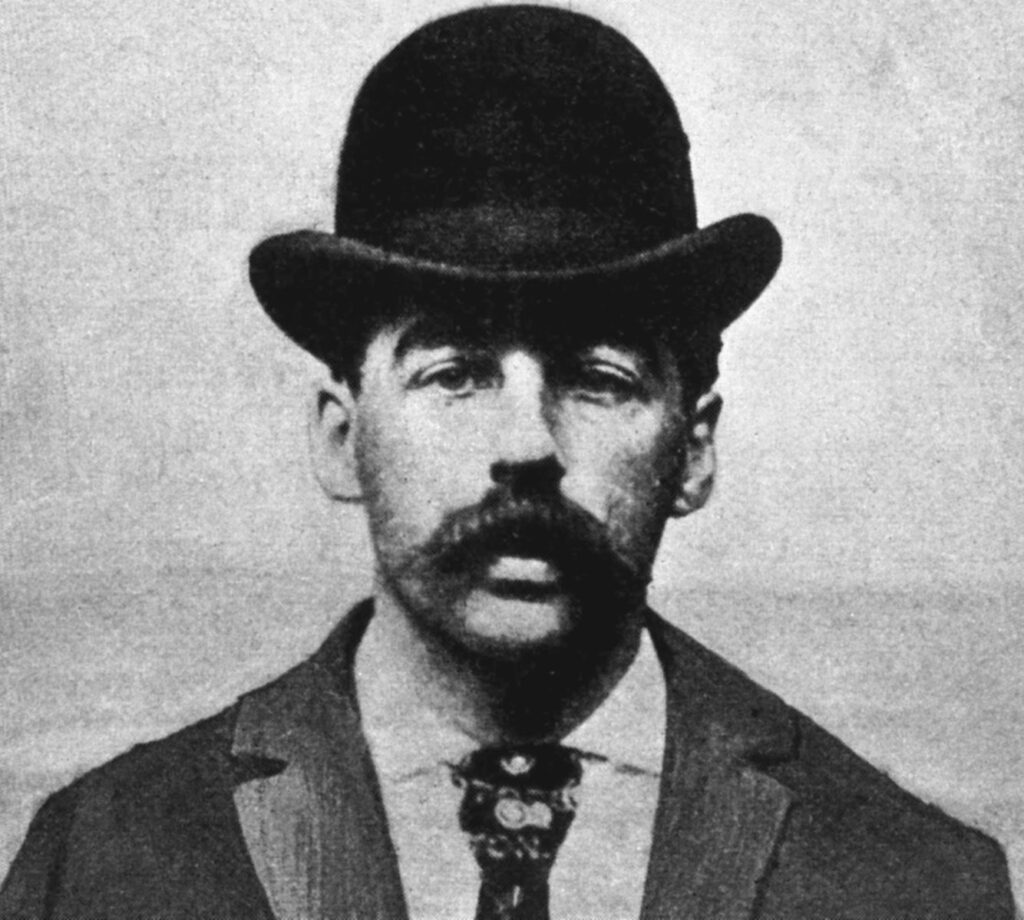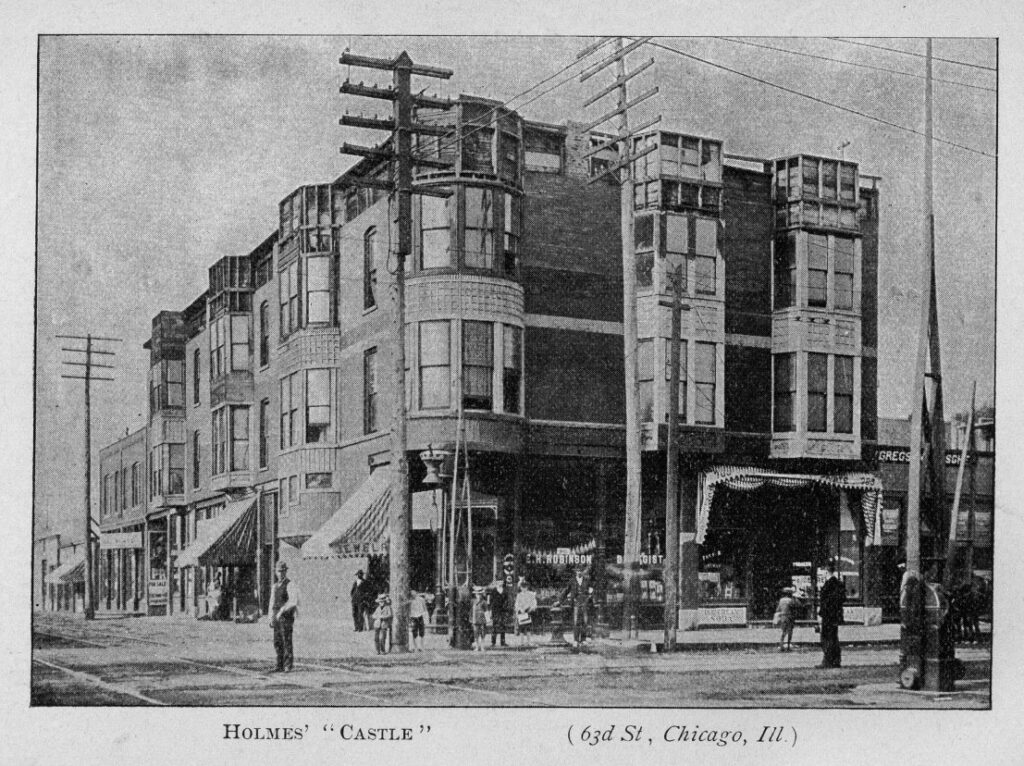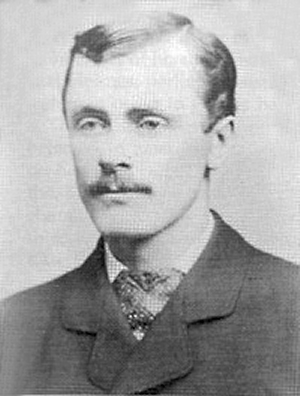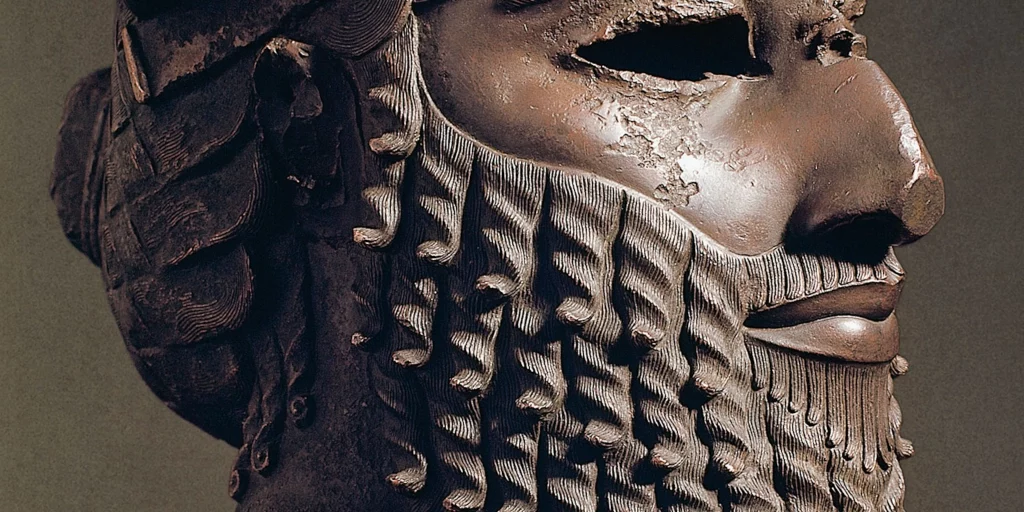In 1891 it was announced that Chicago, Illinois, had been chosen to host the World’s Columbian Exposition. This was a cultural and social event celebrating the 400th anniversary of Columbus’ discovery of America.
It would take place from May to October of 1893, and likely attract millions of people from all around the world.
As word of this momentous event spread throughout Chicago, a man calling himself “H.H. Holmes” saw it as a once-in-a-lifetime opportunity. He knew there would be an influx of visitors searching for lodging near the fairgrounds.
They had just completed construction of a three-story high-rise on the corner of South Wallace Avenue and West 63rd Street in Englewood. It was originally intended as a mixed-use building. It would house retail shops on the first, offices and apartments on the second, and apartments exclusively on the third.
When he heard about the coming of the World’s Fair, he told his investors and creditors that he intended to use the entire building as a hotel. He’d make a fortune—and be able to pay off all his debts.
Soon after tourists began arriving at the Expo fairgrounds, Holmes put his bigger plan into motion. While advertising his hotel in the local newspapers, he began working the fairgrounds.
He approached women traveling alone or in pairs. Described as charming and charismatic, Holmes managed to lure as many as 200 women to his hotel.
Many of whom were never seen again.

Dark Beginnings
Herman Webster Mudgett was born on May 16, 1861, in Gilmanton, New Hampshire.
The future “H.H. Holmes” was the third child born to Levi Horton Mudgett and Theodate Page (née Price). They were both descended from the first English immigrants to settle in that part of the country; and both pious Methodists.
Mudgett’s father was from a respected farming family. At various times, he worked as a farmer, trader, and house painter. His mother, prior to marriage, was a teacher.
Although little is known about the early years of Mudgett’s life, there are a number of stories associated with him. If true, they would seem to provide insight into the man who transformed himself in “H.H. Holmes.”
Mudgett was born into what most would consider an affluent family. He lived a privileged life with few responsibilities. Due to his family’s devout Methodist background, his parents demanded absolute obedience from all their children.
His father is said to have been a strict disciplinarian who drank heavily and often physically abused his family. His mother was “cold and distant.” According to one source, his father would hold kerosene-soaked rags over the children’s mouths to quiet them when they cried.
Showing signs of superior intelligence from an early age, Mudgett was resented by children his age. He was frequently the victim of bullying.
According to Mudgett’s own account, on one occasion his classmates dragged him into an unlocked doctor’s office they passed on their way to school. They forced him to stand face-to-face with a skeleton.
Years later, Mudgett would say of this event, “It was a wicked and dangerous thing to do to a child of tender years and health, but it proved an heroic method of treatment, destined ultimately to cure me of my fears, and to inculcate in me, first, a strong feeling of curiosity, and, later, a desire to learn, which resulted years afterwards in my adopting medicine as a profession.”
Early Signs
Mudgett was continually targeted by his parents and neighborhood children. He chose to spend much of his time alone, taking refuge in the forest near his home.
This is where he is said to have trapped and dissected animals, and developed an obsession with death. At age 11, Mudgett, reportedly, was suspected of killing a neighborhood boy who’d mysteriously disappeared.
Added to this, while still a young boy, Mudgett’s mother developed a terminal illness that completely devastated family stability. Some speculate that she suffered a mental disorder that may have been passed on to her son.
This was perhaps the underlying cause for the psychotic behavior he would display throughout life.
Education
As a boy, Mudgett attended Gilmanton Academy. He was later remembered as a “small, odd, but unusually bright boy.”
Mudgett then attended Phillips Exeter Academy, graduating with honors at age 17. Just after graduation, Mudgett changed his name to Henry Howard Holmes, and in later life only used the moniker, “H.H. Holmes.”
Holmes studied medicine for a short time at a small school in Vermont before being accepted into the University of Michigan Medical School. While a medical student, Holmes perpetrated what is thought to be the first in a long line of schemes based on his growing fascination with death.
Holmes is known to have robbed graves and morgues for bodies to study, dissect, and sell to medical schools. He then turned his fascination into a money-making scheme.
He would steal cadavers (which he would burn or in other ways disfigure to make them unidentifiable) and then plant them so that it would appear they’d been killed in an accident. But prior to planting the bodies, he’d take out life insurance policies on these individuals, naming himself the beneficiary.
Once the bodies were discovered, he’d collect the benefits.
Marriage #1
On July 4, 1878, just after graduating high school, the 17-year-old Holmes married Clara Lovering. She was the daughter of a wealthy farmer from Alton, New Hampshire.
He was known to have been physically violent with Clara. He would later desert her after just one year of marriage. They had a child together, a son they named Robert, born on February 3, 1880.
Before deserting Clara, Holmes scammed enough of her inheritance to attend medical school.
Crime and Career
After graduating from medical school in 1884, Holmes moved to Mooers, New York.
Shortly afterward, a rumor spread that he’d been seen with a little boy who subsequently disappeared. When questioned by authorities, Holmes claimed the boy’s family moved back to their home in Massachusetts. With no other leads, the investigation was dropped.
Leaving Mooers immediately, Holmes made his way to Philadelphia, Pennsylvania. There, he was hired as an attendant at the Norristown State Hospital; a job he quit after just a few days.
He was then hired at a drugstore—where just a short time later he was questioned about the death of a boy who’d died after taking medicine purchased at that store. Holmes denied any involvement in the child’s death and immediately left Philadelphia.
Dr. Henry H. Holmes
By 1885, Holmes had made his way to Chicago, Illinois. Misrepresenting himself as “Dr.” Henry H. Holmes, he was hired as a pharmacist apprentice at a neighborhood pharmacy in Englewood.
When the owner of the drugstore unexpectedly passed away a short time later, Holmes convinced his widow to let him buy the store. Weeks later, the widow went missing and was never heard from again.
Holmes claimed she moved to California, but there was no evidence of that.
“The Castle” and Marriage #2
Once Holmes became the legal owner of the drugstore, he set his sights on purchasing the empty lot across the street. He used his drugstore as leverage to convince bankers to extend sizable loans.
He also persuaded local businessmen to invest heavily in a two-story building that would provide retail space for new businesses on the first floor, and apartments or office space on the second. The building would be in a prime location so he had no trouble attracting interested parties.
In late 1886, while still legally married to Clara, Holmes married 24-year-old Myrta Belknap, in Minneapolis, Minnesota. He filed for divorce from Clara a few weeks later–alleging infidelity and abandonment.
Documents show that Clara was never served divorce papers and their was divorce never finalized. Holmes had one child with Myrta, a daughter they named Lucy Theodate Holmes, born on July 4, 1889.
Once construction of the new building began in 1889, Holmes hired and fired a series of construction crews. He didn’t want anyone to have a complete picture of what he was actually planning.
By 1890, he was being sued by a number of tradesmen for non-payment and breach of contract. But still, the work continued. Holmes was able to persuade unsuspecting tradesmen into applying their skills to the project locals were now referring to as “The Castle.”

When construction was complete in 1891, Holmes placed ads in newspapers offering jobs for young women. He advertised “The Castle” as a place of spacious lodging.
Unbeknownst to his wife Clara, he also placed ads representing himself as a wealthy businessman looking for a wife.
In 1892, Holmes added a third floor to “The Castle” in anticipation of the upcoming World’s Columbian Exposition.
Inside “The Castle”
Of the more than 200 guests believed to have checked into “The Castle” during the Expo, none who survived apparently had any clue as to the inherent dangers they’d escaped.
Unbeknownst to anyone but the madman himself, Holmes had designed the building to accommodate the fate he had in mind for his victims. This was even before the announcement of the Expo.
In addition to the many rooms, his design included an operating room, a torture chamber, a mortuary, and a room for conducting human experiments.
The guest rooms were arranged in a maze-like fashion. They incorporated corridors leading nowhere, concealed passages behind walls, sliding panels, and secret staircases.
Each room was built with peepholes allowing Holmes to watch his guests. There were trapdoors concealing metal chutes connected to the elaborately-designed torture-chamber-like basement.
According to one report, there were huge acid vats in the basement to dissolve his victims’ remains.
After the Expo ended and Holmes’ diabolical murder spree was discovered, “The Castle” was renamed by locals for what it actually was: “Murder Castle.”
Marriage #3, Escape, Capture, Incarceration
On January 17, 1894, Holmes married Georgiana Yoke, in Denver, Colorado. He was still married to both Clara and Myrta.
During this time he befriended a like-minded man named Benjamin Pitezel (who was married and had 3 children). It was with him that Holmes would plot his next scheme.

After the World’s Columbian Exposition ended, Holmes and Pitezel left Chicago. They were intent on perpetrating an insurance fraud scheme across the country.
Their crime spree ended, however, in mid-1894. Holmes was arrested for attempting to swindle a St. Louis pharmacy.
While incarcerated, Holmes met fellow inmate Marion Hedgepeth, with whom he hatched an insurance scam involving faking Benjamin Pitezel’s death.
But once released from prison, Holmes decided it was easier to simply kill Pitezel–and his entire family. This resulted in a $10,000 life insurance payout for Holmes.
Hedgepeth read about Pitezel’s death and realized he’d never see his cut of the money. So he directed authorities to Holmes, forcing him to run.
In November of that year, Holmes was again arrested. This time by Pinkerton detectives in Boston, Massachusetts.
He was charged with “conspiracy to cheat and defraud” the Fidelity Mutual Life Insurance Company. Found guilty, he was sent to Moyamensing Prison in Philadelphia.
Clues Leading to Discovery
Meanwhile, Frank Geyer, a Philadelphia police detective was assigned to investigate Holmes (and find the 3 missing Pitezel children).
He discovered the gruesome decomposed bodies of 13-year-old Alice Pitezel and 9-year-old Nellie Pitezel in the cellar of a Toronto, Canada, house. The house in which Holmes (and his unsuspecting wife) had used as a hideout.
Following the trail, Detective Geyer then found a cottage Holmes had rented in Indianapolis, Indiana. There, he discovered the teeth and bones of 7-year-old Howard Robert Pitezel in the fireplace.
The trail then led to a local pharmacy where Holmes had purchased the drugs used to kill the boy. And also the repair shop where he’d had the knives sharpened that he used to dismember the boy’s body before burning it.
In 1895, while still in custody at Moyamensing Prison, Holmes was tried and convicted of the Pitezel murders (including the three Pitezel children).
During his trial, Holmes went on record as having committed 27 murders. He later told his attorney that he’d actually killed 133 people.
These outrageous claims gained credibility when Chicago Police discovered the remains of approximately 100 bodies scattered throughout “Murder Castle.”
Between the times of Holmes’ arrest and conviction for the Pitezel murders, “Murder Castle” was mysteriously destroyed by arson. The fire is believed to have been intentionally set by neighbors wanting to keep the building from becoming a tourist attraction.
References
biography.com., “H.H. Holmes,” H.H. Holmes – Childhood, Crimes & Facts (biography.com)
britannica.com., “H.H. Holmes,” H.H. Holmes | Biography & Facts | Britannica
pracitcalpie.com., “H.H. Holmes,” H. H. Holmes (Serial Killer Biography) – Practical Psychology (practicalpie.com)
pbs.org., “World’s Columbian Exposition of 1893,” https://www.pbs.org/wgbh/americanexperience/features/chicago-worlds-columbian-exposition-1893/
legendsofamerica.com., “H.H. Holmes and the Murder Castle of Chicago,” https://www.legendsofamerica.com/h-h-holmes/
biographics.org., “America’s First Serial Killer—H.H.Holmes,” America’s First Serial Killer – H. H. Holmes – Biographies by Biographics
csp.edu., “H.H. Holmes: One of America’s First Recorded Serial Murderers,” https://www.csp.edu/wp-content/uploads/2021/02/Forensic-Scholars-Today-1.2-H.H.-Holmes-One-of-Americas-First-Recorded-Serial-Murderers.pdf

